What’s Up?
Morning Two on the Spoonbill Boat IPT was even slower than morning One. That said we made some really good pre-dawn blurs and Anita North nailed a landing, braking spoonbill with her D850/600VR/TC-E17 rig on a tripod. Anita and John Dupps, another multiple IPT veteran, nailed an Osprey in flight carrying a nice-sized, fresh-caught weakfish. Both afternoons have been great for flying pelicans when I have been experimenting with the SONY 100-400 with the 2X TC. You might be surprised by the results. I was …
IPT Updates
I still need three or four folks for the Galapagos trip, and the UK Puffins and Gannets trip is wide open with only a single registrant. Please shoot me an e-mail to learn about the huge late registration discount on the Galapagos trip.
- The 2019 Fort DeSoto Spring IPT/THURS 18 APRIL through the morning session on SUNDAY APRIL 21, 2019: 3 1/2 DAYS: $1549. Limit 8/Openings: 4. Meet and greet at 7PM on the evening of WED 17 APRIL.
- The New, Expanded 2019 UK Puffins, Gannets, & Red Kites IPT. Thursday June 27 (from EDI) through Tuesday, July 9, 2019 (on the ground; fly home on Wednesday July 10.): $9,999. Limit 10 photographers/Openings: 9. This trip needs four to run. Co-leader: Peter Kes.
- The GALAPAGOS Photo Cruise of a Lifetime IPT/The Complete Galapagos Photographic Experience. July 23 to August 6, 2019 on the boat. 13 FULL and two half-days of photography: $14,499. Limit: 12 photographers/Openings: 4. Please e-mail to learn about the huge late registration discount for this trip.
BIRDS AS ART
BIRDS AS ART is registered in the U.S. Patent and Trademark Office.
Orlando Camera Club Program Sponsored By Bedford Camera
On February 25, 2019, I will be presenting “Lessons from the Field – BIRDS AS ART Style” for the Orlando Camera Club. They told me that they did not want to see beautiful images as they would rather learn. I told them that I would need to show them lots of beautiful images during the course of the lessons. 🙂 I have been having a ton of fun for three weeks creating this brand new program. The meeting begins at 6:15; my program is scheduled for 6:15 – 8:00pm at the Marks Senior Center, 99 E Marks Street, Orlando, FL 32803. The meeting is free and open to the public. If you learned about the program through the blog be sure to come up for a hug.
Huge thanks to Steve Elkins at Bedford Camera for sponsoring my appearance and to Holly Manus for the invitation. Click on the logo-link above or check out the Money Saving Reminder feature immediately below to get acquainted with Bedford.
From the OCC website here:
Arthur Morris will present “Lessons from the Field – BIRDS AS ART Style”. This slide-illustrated lecture will feature hundred’s of Artie’s spectacular photographs. As he shares images from his favorite locations around the globe he will be telling us about the birds and other creatures that he photographs and about the equipment and techniques that he uses to create his images. Topics to be covered include getting close to free and wild birds, flight photography, getting the right exposure, and image design. A selection of books and CDs will be available.
Selling Your Used Photo Gear Through BIRDS AS ART
Selling your used (or like-new) photo gear through the BAA Blog is a great idea. We charge only a 5% commission. One of the more popular used gear for sale sites charged a minimum of 20%. Plus assorted fees! Yikes. They went out of business. And e-Bay fees are now up to 13%. The minimum item price here is $500 (or less for a $25 fee). If you are interested please scroll down here or shoot us an e-mail with the words Items for Sale Info Request cut and pasted into the Subject line :). Stuff that is priced fairly — I offer pricing advice to those who agree to the terms — usually sells in no time flat. Over the past year, we have sold many dozens of items. Do know that prices on some items like the EOS-1D Mark IV, the old Canon 100-400, the old 500mm, the EOS-7D and 7D Mark II and the original 400mm DO lens have been dropping steadily. Most recently the price of used Canon 600mm f/L IS II lenses have been dropping like a rock with the introduction of the 600 III. You can always see the current listings by clicking here or on the Used Photo Gear tab on the orange-yellow menu bar near the top of each blog post page.
Recent Sales
I sold my Nikon AF-S Teleconverter TC-17E II in near-mint condition for a BAA record low price of $299.00 in mid-February.
Multiple IPT veteran, dear friend, and BAA technical advisor Patrick Sparkman sold his Nikon AF-S NIKKOR 600mm f/4E FL ED VR lens in like-new condition for $10,996.95 his Nikon AF-S NIKKOR 24-120mm f/4G ED VR lens in like-new condition for $475.00, his Nikon AF-S NIKKOR 200-500mm f/5.6E ED VR Lens in like-new condition for $910.00, and his Nikon AF-S Teleconverter TC-14E III in excellent condition for $385.00 all within a day of listing them in early February.
John Svendsen sold a Nikon AF-S VR Zoom-NIKKOR 200-400mm f/4G IF ED lens (the original version) in near-mint condition for the BAA record low price by miles of $1499.00 in early January.
John M Wright sold his Canon EOS 5D Mark III DSLR body in excellent condition for the BAA record-low price of $949.00, a Canon EOS 7D Mark II DSLR body in excellent plus condition for $799.00, and a Canon Extender (teleconverter) EF 1.4X III in near-mint condition for $265.00 in mid-January.
Brooke Miller sold a Canon EF 100-400mm F4.5-5.6L IS II USM in excellent condition for $1,199.00 (was $1,449.00) in late January, 2019.
Charlie Curry exhibited great patience and finally sold his Canon EF 100-400mm L IS II lens in like-new condition for a very low $1445.00 in late January.
Judy Helderman sold her Canon 500mm f/4L IS USM lens in very good condition for $2,799.00 and her Canon 70-200 f/2.8L IS USM lens (the original IS version) lens in near-mint condition for the BAA record-low price of $799.00.
John Wright sold a Canon 500mm f/4 IS USM and a Canon EF Extender 1.4X II, both in very good plus condition for $3399.00 in mid-January.
IPT veteran Mark Overgaard sold hisCanon EF 35mm f/1.4L II USM lens in near-mint condition for $1,299.00 in mid-January.
John M Wright sold his Canon EF 500mm f/4L IS II USM lens in excellent to near-mint condition for the BAA record-low price of $6,950.00, his Canon EF 100-400mm f/4.5-5.6L IS II lens in near-mint condition for the BAA record-low price of 1,299.00, a Canon EF 400mm f/5.6L lens in excellent condition for the BAA record-low price of $599.00, his Canon EF 16-35mm f/4L IS lens in near-mint condition for the BAA record-low price of $499.00,
and a Canon Extender (teleconverter) EF 2X III in near-mint condition for $265.00, all within days of their being listed.
Money Saving Reminder
If you need a hot photo item that is out of stock at B&H, would enjoy free overnight shipping, and would like a $50 discount on your first purchase, click here to order and enter the coupon code BIRDSASART at checkout. If you are looking to strike a deal on Canon or Nikon gear (including the big telephotos) or on a multiple item order, contact Steve Elkins via e-mail or on his cell at (479) 381-2592 (Eastern time) and be sure to mention your BIRDSASART coupon code and use it for your online order. Steve currently has several D850s in stock along with a Nikon 600mm f/4 VR. He is taking pre-orders for the new Nikon 500 P and the Nikon Z6 mirrorless camera body.
Gear Questions and Advice
Too many folks attending BAA IPTs and dozens of photographers whom I see in the field and on BPN, are–out of ignorance–using the wrong gear especially when it comes to tripods and more especially, tripod heads… Please know that I am always glad to answer your gear questions via e-mail. Those questions might deal with systems, camera bodies, accessories, and/or lens choices and decisions.
|
|
This is a Photo Mechanic screen capture of the two RAW files. |
Which One was the SONY Image? Which One was the Nikon Image?
In the SONY or Nikon? Can you judge the Image Quality? blog post here, I posted the following with regards to the two images (now below):
The Playing Field
Both of today’s featured images were created within minutes of each other. One was made with my new Sony gear, one was made with my Nikon gear. Both were converted in Capture One. There was no selective sharpening, no NIK, and no sharpening at applied to the resulting JPEGs.
I have tried many times to create identical images with different camera bodies for comparative purposes. I have always failed miserably even when I photographed a sign with the gear on a tripod! With a bird, it is pretty much impossible. But I tried.
SONY or Nikon?
Please enlarge each image to view a larger, inexplicably sharper version. I ask that you judge only the fine feather detail on the breast, the folded wings, the back, and the head. Do note that when created Image #1 the sun was a bit brighter than when I created Image #2. Please therefore do not concern yourself with differences in color or contrast. Both of those in large part are more a function of the photographer’s personal tastes and their choices both during the RAW conversion and later in Photoshop. Similarly, do not choose the “best” image based on your favorite pose. As above, my only concern here is to see if anyone can note image quality differences in an unsharpened 1200 pixel wide JPEG.
If you need some help, you can check out my very similar BPN post here.
So, which One was the SONY image and which one was the Nikon Image?
The SONY RAW file is on the left with the designation “.ARW.” — I often wonder if the person who named their RAW files was dyslexic … The Nikon file on our right is designated “.NEF.” The optimized versions of each are below as they appeared in the original post.
It should be obvious to most folks that the Nikon AW file was a better capture than the SONY RAW file, that due to the fact that the sun came out briefly when I made the Nikon image with the 500 PF and the fact that the SONY image was underexposed.
Equally obvious is that the subject in the original Nikon image was larger in the frame then the subject in the original SONY image. I had been at 400mm with the SONY 100-400 so when I “borrowed” my 500 PF from Anita North I stepped back two big steps. But that was not enough to equalize the subject sizes …
|
|
|
This image was created after the conclusion of the 2019 San Diego IPT. ISO 400: 1/800 at f/6.3 was an underexposure. Image #1: Pacific race Brown Pelican on rock |
The Optimized SONY File
Image #1 above was the made with the SONY gear, the 100-400 with the A9 without a TC. The image was converted in Capture One and brought into Photoshop where I did not do much to it. On the surface, I actually like the color and the brightness of the Nikon image better than what I did with the SONY image above. But, and this is a very big but, when I examined the breast at 200% it was obvious that the SONY image had better fine feather detail (FFD). Could that be due to the superiority of the SONY file as compared to the Nikon RAW file? Surely not. Both images were made hand held so equipment shake and/or poor technique could have skewed the results … I do not think that the processing was a factor but there is no way to know for sure.
|
|
|
This image was created after the conclusion of the 2019 San Diego IPT. ISO 400: 1/500 at f/5.6 was perfect. Image #2: Pacific race Brown Pelican on rock |
The Optimized Nikon File
As above, the Nikon file started from a much better place due to the aforementioned moment of sunlight. Of the two optimized images in this exercise, I prefer the Nikon file. Opinion however, was about 50/50. Remember however that I asked only about image quality and fine feather detail. The folks who commented specifically on that were also about 50/50 with a slight edge to the SONY file. Things were the same on the BPN thread linked to above.
These comments on the BPN thread by my friend Joe Przybyla were somewhat telling. First he wrote:
My guess would be Sony for both. To my old eyes neither looks like a Nikon file.
Then he came back with this:
Good Morning Artie. After reading your most recent post I had a go at the two images again. I imported both into Lightroom so I could look at them side be side for comparison. I assume your Nikon gear is your D850 with 47.5 mp, the Sony A9 only has 24.2. So not really a fair comparison. Looking at the images closely and zooming them up I would say the first image is from the Nikon D850, the resolution on the breast and the head is better, color is better IMO. The second image has smudging on the breast noticeable when zoomed up, and there is slightly more blue in the white areas of the bill. That said, I am ready to find out I am wrong.
Joe has become quite a skilled photographer by hanging around BPN for the past few years. He uses Nikon gear with the D500 and is quite familiar with the look of Nikon images. When I posted my first SONY image he agreed with many folks in feeling that image quality of the SONY files was clearly and obviously inferior to image quality of the Nikon bodies … I think that lots of folks on BPN jumped on that bandwagon agreeing in part with Arash who stated that Sony was garbage.
Likewise, Jim Gindorff was equally emphatic on the blog when he posted:
I am guessing that the first image is Nikon and the second one is Sony. For one, there appears to me to be more feather detail in the breast feathers of the first image (with the larger sensor) and two, the dynamic range of the first photo appears to me to be wider – a characteristic of the Nikon over the Sony according to the DXO sensor ratings (but not by much).
So Jim too thought that the SONY image was the Nikon image …
The Truth of the Matter as I See It
There were lots of insightful comments on the original post and on the BPN thread and my summary here will reflect many of those. Thanks as always to those who commented and voiced an opinion.
1- It is pretty much impossible to determine which system an image was created with based on a 1200 pixel wide JPEG (on the BAA Blog) or even on the 1920 pixel wide JPEGs on BPN. I must say that the 1920 wide JPEG of the SONY image on BPN looked pretty good, much better than the 1200 wide JPEG on the blog did.
2- #1 is even more true when you consider the differences in monitors and in the post-processing techniques and decisions made by the photographer.
3- The best way to check on image quality is by viewing RAW files at 100% (that said even though we can never see a RAW file — we can view full sized TIFFs or PSD files created from RAW files). Those would be best viewed on large, quality external monitors. Since I began doing digital photography just after the turn of the century I have reviewed and processed my images only on laptops. At present (and for the past 4 years plus), I am and have been quite happy with my MacBook Pro (Retina display, 15-inch, Mid 2014), so happy that I would love to purchase another brand new one exactly the same. Do understand that many pixel peeping photographers scoff at me and my laptop ..
3- In general good photographers will create good images with whatever gear they have in their hands.
4- Based on the opinions of those who commented both here and on BPN it seems that SONY is more than capable of creating quality images when viewed as 1200 or 1920 wide JPEgs. Many saw little or no differences in the two files.
5- The general consensus seems to be that SONY was not as bad as those with pre-conceived notions had thought …
What else was there to learn?
Several folks commented in the obvious differences in the two backgrounds. The background of Image #2 was softer without as much detail as the background in Image #1 as a longer focal length was used (as I tried to keep the subject size roughly the same.) groob used the differences in the background to figure that Image #2 was created with the Nikon 500 PF.
Color casts might be perceived (or mis-perceived) for a great variety of reasons including personal bias, differences in monitors, and differences in viewing conditions. Different folks attributed different color casts to both of the images in question …
Stay tuned for lots more on SONY, Nikon, and even the occasional Canon image.
|
|
|
Fort DeSoto in spring is rife with tame birds, many in full breeding plumage. Click on the composite to enjoy a larger version. Clockwise from upper left around to center: Laughing Gull landing on head of Brown Pelican, Laughing Gull in flight, Reddish Egret sunrise silhouette, Great Blue Heron with needlefish, Yellow-crowned Night Heron with ghost crab, Roseate Spoonbill, Sanderling in breeding plumage, and white morph Reddish Egret in glorious breeding plumage. |
The 2019 Fort DeSoto Spring IPT/THURS 18 APRIL through the morning session on SUNDAY APRIL 21, 2019: 3 1/2 DAYS: $1549. Limit 8/Openings: 4. Meet and greet at 7PM on the evening of WED 17 APRIL.
Fort DeSoto, located just south of St. Petersburg, FL, is a mecca for a great variety of migrant shorebirds, gulls, terns, and passerines in Spring. Many of the gulls and terns will be courting and copulating. There the migrants join hundreds of Florida resident egrets, herons, night-herons, and pelicans on the T-shaped peninsula. We should get to photograph one of Florida’s most desirable shorebird species: Marbled Godwit. Black-bellied Plover and Willet are easy, American Oystercatcher almost guaranteed. Great Egret, Snowy Egret, Great Blue Heron, Tricolored Heron, and White Ibis are easy as well and many of those will be in their spectacular breeding plumages. Yellow-crowned Night-Heron is a strong possibility. We may get to see and photograph the amazing heron/egret hybrid that has been present for three years. And we should enjoy some great Brown Pelican flight photography. In addition, Royal, Sandwich, Forster’s, and Caspian Terns will likely provide us with some good flight opportunities as well. Though not guaranteed, Roseate Spoonbill and Wood Stork might well be expected. And we will be on the lookout for a migrant passerine fallout in the event of a thunderstorm or two. Yikes, I almost forgot to mention that nearly all of the birds are ridiculously tame!
|
|
|
Yes, Fort DeSoto in spring is rife with tame birds, most in breeding plumage. Click on the composite to enjoy a larger version. Clockwise from upper left around to center: breeding plumage Dunlin, dark morph Reddish Egret displaying, Laughing Gull vertical front-end portrait, Laughing Gull with prey item, landing on head of Brown Pelican, breeding plumage Royal Tern displaying, Royal Terns — pre-copulatory stance, Laughing Gulls copulating, Laughing Gull head portrait, breeding plumage Sandwich Tern with fish, and a rare treat, a breeding plumage White-rumped Sandpiper. |
Just some of the stuff you will learn …
On the IPT you will learn basics and fine points of digital exposure and to get the right exposure every time after making a single test exposure, how to approach free and wild birds without disturbing them, to understand and predict bird behavior, to identify many species of shorebirds, to spot the good situations, to choose the best perspective, to see and understand the light, and to design pleasing images by mastering your camera’s AF system. Most importantly you will surely learn to evaluate wind and sky conditions and understand how they affect bird photography. And you will learn how and why to work in Manual mode (even if you’re scared of it).
|
|
|
Again, Fort DeSoto in spring is rife with tame birds, most in breeding plumage. Click on the composite to enjoy a larger version. Clockwise from upper left around to center: Laughing Gull in flight, Yellow-crowned Night-Heron, Sandwich Terns copulating, Roseate Spoonbill, Great Egret with reflection, breeding plumage Short-billed Dowitcher, American Oystercatcher, Royal Tern, white morph Reddish Egret, and Snowy Egret in marsh. |
What we do
There will be seven shooting sessions in all: four 3+ hours morning session and three 2 1/2 hour afternoon sessions. There will be a Photoshop/image review session during or after lunch (lunch is included) on each of the three full days. That will be followed by Instructor Nap Time.
The best airport is Tampa (TPA). Once you register, you will receive an e-mail with the hotel/lodging information.
|
|
|
You got it, Fort DeSoto in spring is rife with tame birds, most in breeding plumage. Click on the composite to enjoy a larger version. Clockwise from upper left around to center: Roseate Spoonbill, immature Brown Pelican in flight, the heron/egret hybrid, American Oystercatcher feeding, immature Royal Tern on railing, Great Egret morning silhouette, Black Skimmer in surf, and underside head portrait of Great Blue Heron. |
Signing Up
A $500 deposit is due when you sign up and is payable by credit card. Balances must be paid by check after you register. Your deposit is non-refundable unless the IPT sells out with eight folks so please check your plans carefully before committing. You can register by calling Jim or Jennifer during weekday business hours at 863-692-0906 with a credit card in hand or by sending a check as follows: make the check out to: BIRDS AS ART and send it via US mail here: BIRDS AS ART, PO BOX 7245, Indian Lake Estates, FL 33855. You will receive a confirmation e-mail with detailed instructions, clothing, and gear advice. Please remember that the meet and greet will take place on the evening of WED 17 APRIL. Please shoot me an e-mail if you plan to register or if you have any questions.
|
Folks attending this IPT will be out in the field early and stay late to take advantage of sunrise and sunset colors. Click on the composite to enjoy a larger version. Clockwise from upper left to center: Long-billed Curlew, juvenile Tricolored Heron, Marbled Godwits, Great Blue Heron, juvenile Pectoral Sandpiper, Wood Stork, smiling Sea Scallop, Ruddy Turnstone scavenging needlefish, Great Blue Heron sunset silhouette at my secret spot, and southbound migrant tern flock blur. |
Early and Late
Getting up early and staying out late is pretty much a staple on all BIRDS AS ART Instructional Photo-Tours; on this particular trip we will get lots of sleep as the days are short. Being in the field well before the sun comes up and staying out until sunset will often present unique photographic opportunities, opportunities that will be missed by those who need their beauty rest. I really love it when I am leaving the beach on a sunny morning after a great session just as a carful or two of well-rested photographers arrive.
Help Support the Blog
Please help support my efforts here on the blog by remembering to click on the logo link above each time that you shop Amazon. That would be greatly appreciated. There is no problem using your Prime account; just click on the link and log into your Prime account. With love, artie
If In Doubt …
If in doubt about using the BAA B&H affiliate link correctly, you can always start your search by clicking here. Please note that the tracking is invisible. Web orders only. Please, however, remember to shoot me your receipt via e-mail.




Please Remember to use my Affiliate Links and to Visit the New BAA Online Store 🙂
To show your appreciation for my continuing efforts here, we ask, as always, that you get in the habit of using my B&H affiliate links on the right side of the blog for all of your photo and electronics purchases. Please check the availability of all photographic accessories in the New BIRDS AS ART Online Store, especially the Mongoose M3.6 tripod head, Wimberley lens plates, Delkin flash cards and accessories, and LensCoat stuff.
As always, we sell only what I have used, have tested, and can depend on. We will not sell you junk. We know what you need to make creating great images easy and fun. And please remember that I am always glad to answer your gear questions via e-mail.
I would of course appreciate your using our B&H affiliate links for all of your major gear, video, and electronic purchases. For the photographic stuff mentioned in the paragraph above, and for everything else in the new store, we, meaning BAA, would of course greatly appreciate your business. Here is a huge thank you to the many who have been using our links on a regular basis and those who will be visiting the New BIRDS AS ART Online Store as well.
Be sure to like and follow BAA on Facebook by clicking on the logo link upper right. Tanks a stack.
Typos
In all blog posts and Bulletins, feel free to e-mail or to leave a comment regarding any typos or errors. Just be right :).


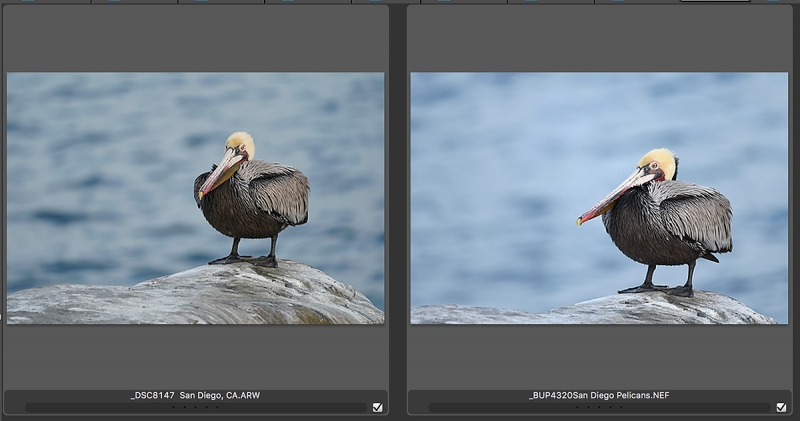
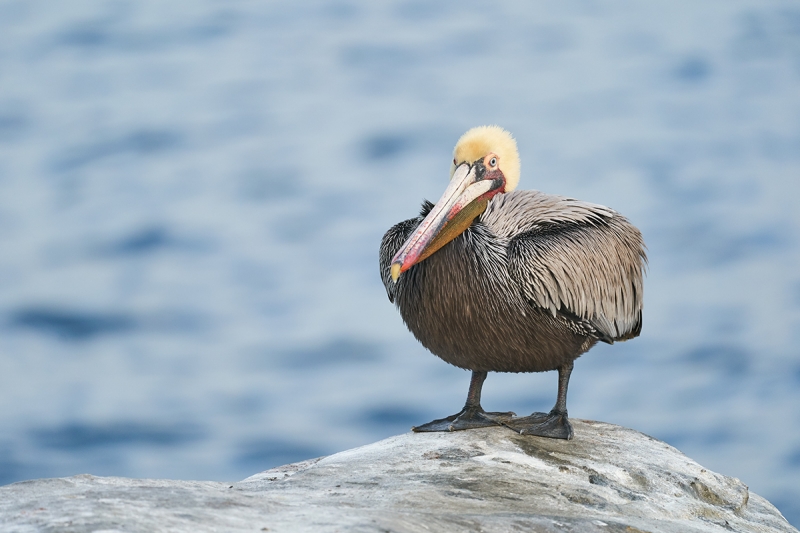
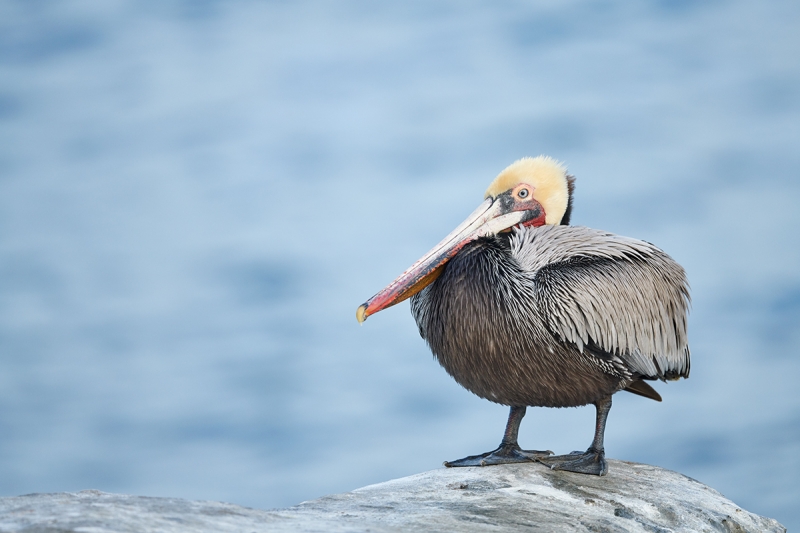
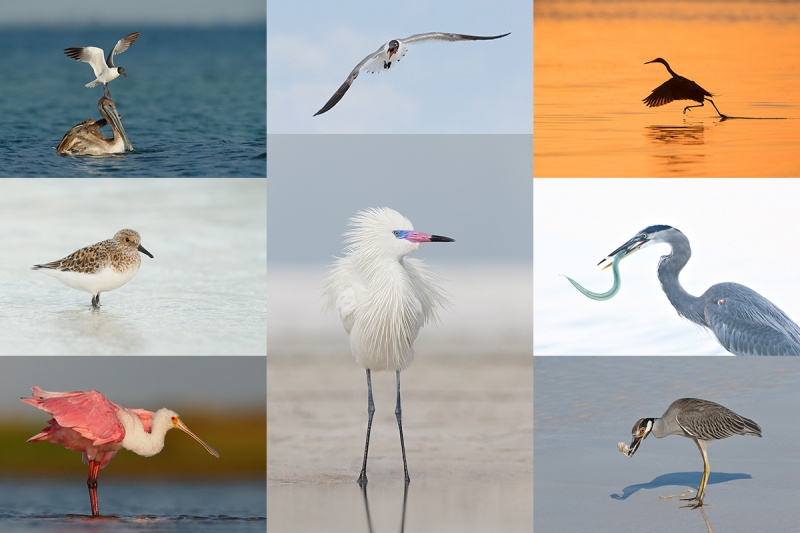
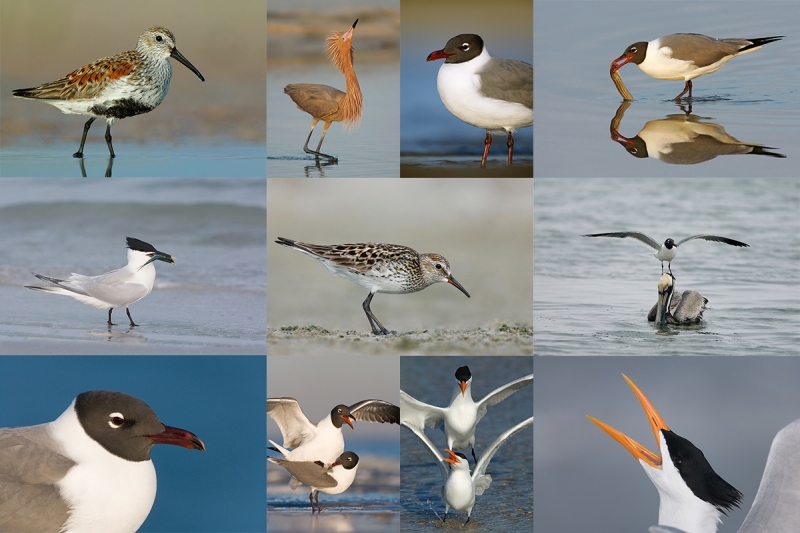
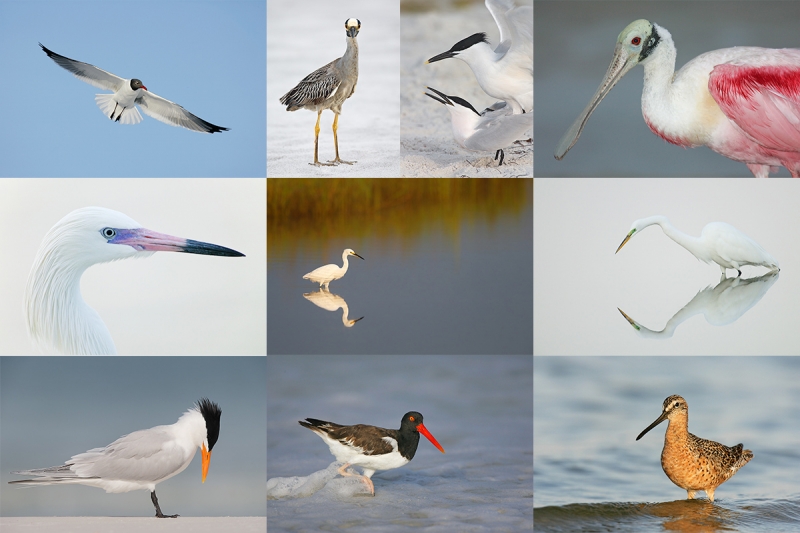
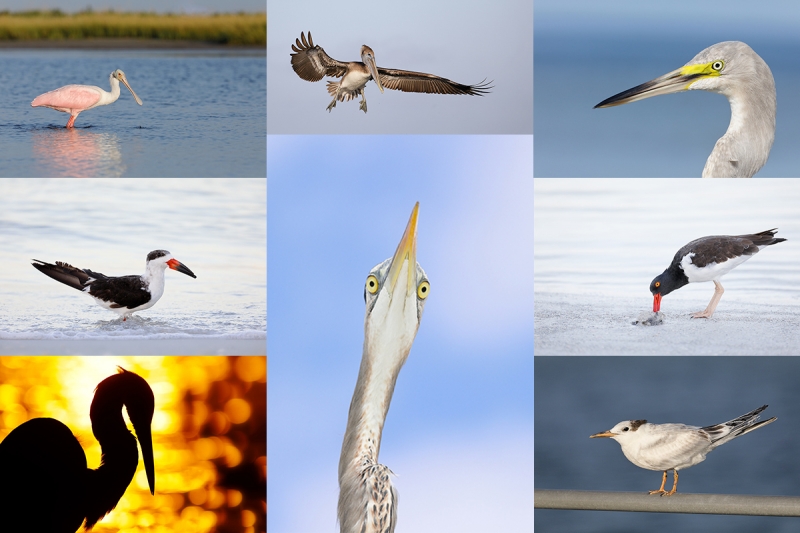














I don’t know why, but when I’d seen the original post, I had felt that the feet and eyes were sharper in the second image which turned out to be the Nikon. But as you said none of this matters more than the skill of the person handling it.
Artie, do you prefer Capture 1 to ACR and Nikon’s own processing software?
Hi Nick,0 fi
Yes, opinion on which was the higher quality image was pretty much split. I am glad that in the eyes of some folks the SONY A9 file was at least comparable with the D850 file. And yes again, differences in the post-processing of even similar images can vary greatly.
I am in the process of switching to (and loving) Capture One v.11 exclusively for my Nikon and SONY images. I have never used the Nikon software to process a RAW (NEF) file.
with love, artie
Good morning Guru. Hope you are fine.
Guru, in case we would like to see image quality from different brands, same images should be shot by different photographers with the gears they love. I mean Sony image should be captured by a photog who loves his Sony gears, likewise, Nikon by a Nikonian and Canon by a Canonian.
This is my humble opinion. What do you say?
Best regards.
I agree. Right now I am having fun with both my SONY and my Nikon gear.
with love, artie
“In general good photographers will create good images with whatever gear they have in their hands.”
I’d say that’s the real takeaway..
Salud Artie.
The best is the one you didn’t create ,but could have,and did create so many times with your Canons.Better colour and mood.cf(among quite a few others) Bosqke glourious orange misty dawn.
Best regards.
jce.
jce,
Thanks for sharing your thoughts. I hope that you are using the gear that will enable you to make the best possible images, images that make you happy. That is what I am doing. For me, Nikon and SONY offer autofocus for birds in flight that is far superior to Canon autofocus. For me.
with love, artie
Good Morning Artie, thank you for the kind words. Not only did BPN help but so did your books, videos, and your blog. Your books contain invaluable information for anyone wanting to become a better nature photographer. Your writings I have found easy to understand and to use in my photographing. Thank you for sharing.
Hey Joe, Thanks for your kind words. You have worked very hard to become a fine photographer. And succeeded admirably.
with love, artie